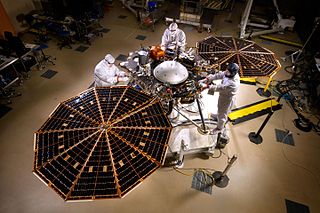In electronics and communication, flutter is the rapid variation of signal parameters, such as amplitude, phase, and frequency. Examples of electronic flutter are:

The Millennium Bridge, officially known as the London Millennium Footbridge, is a steel suspension bridge for pedestrians crossing the River Thames in London, England, linking Bankside with the City of London. It is located between Southwark Bridge and Blackfriars Railway Bridge. It is owned and maintained by Bridge House Estates, a charitable trust overseen by the City of London Corporation. Construction began in 1998, and it initially opened in June 2000.

Forensic engineering has been defined as "the investigation of failures - ranging from serviceability to catastrophic - which may lead to legal activity, including both civil and criminal". It therefore includes the investigation of materials, products, structures or components that fail or do not operate or function as intended, causing personal injury, damage to property or economic loss. The consequences of failure may give rise to action under either criminal or civil law including but not limited to health and safety legislation, the laws of contract and/or product liability and the laws of tort. The field also deals with retracing processes and procedures leading to accidents in operation of vehicles or machinery. Generally, the purpose of a forensic engineering investigation is to locate cause or causes of failure with a view to improve performance or life of a component, or to assist a court in determining the facts of an accident. It can also involve investigation of intellectual property claims, especially patents.

The technical meaning of maintenance involves functional checks, servicing, repairing or replacing of necessary devices, equipment, machinery, building infrastructure, and supporting utilities in industrial, business, governmental, and residential installations. Over time, this has come to often include both scheduled and preventive maintenance as cost-effective practices to keep equipment ready for operation at the utilization stage of a system lifecycle.
A mechanical or physical shock is a sudden acceleration caused, for example, by impact, drop kick, earthquake, or explosion. Shock is a transient physical excitation.

A tuned mass damper (TMD), also known as a harmonic absorber or seismic damper, is a device mounted in structures to reduce the amplitude of mechanical vibrations. Their application can prevent discomfort, damage, or outright structural failure. They are frequently used in power transmission, automobiles, and buildings.
Limit state design (LSD), also known as load and resistance factor design (LRFD), refers to a design method used in structural engineering. A limit state is a condition of a structure beyond which it no longer fulfills the relevant design criteria. The condition may refer to a degree of loading or other actions on the structure, while the criteria refer to structural integrity, fitness for use, durability or other design requirements. A structure designed by LSD is proportioned to sustain all actions likely to occur during its design life, and to remain fit for use, with an appropriate level of reliability for each limit state. Building codes based on LSD implicitly define the appropriate levels of reliability by their prescriptions.
An overpass is a bridge, road, railway or similar structure that crosses over another road or railway. An overpass and underpass together form a grade separation. Stack interchanges are made up of many overpasses.

A footbridge is a bridge designed solely for pedestrians. While the primary meaning for a bridge is a structure which links "two points at a height above the ground", a footbridge can also be a lower structure, such as a boardwalk, that enables pedestrians to cross wet, fragile, or mashy land. Bridges range from stepping stones–possibly the earliest man-made structure to "bridge" water–to elaborate steel structures. Another early bridge would have been simply a fallen tree. In some cases a footbridge can be both functional and a beautiful work of art.

In engineering, redundancy is the duplication of critical components or functions of a system with the intention of increasing reliability of the system, usually in the form of a backup or fail-safe, or to improve actual system performance, such as in the case of GNSS receivers, or multi-threaded computer processing.
Fault tolerance is the property that enables a system to continue operating properly in the event of the failure of some of its components. If its operating quality decreases at all, the decrease is proportional to the severity of the failure, as compared to a naively designed system in which even a small failure can cause total breakdown. Fault tolerance is particularly sought after in high-availability or life-critical systems. The ability of maintaining functionality when portions of a system break down is referred to as graceful degradation.
Reliability, availability and serviceability (RAS) is a computer hardware engineering term involving reliability engineering, high availability, and serviceability design. The phrase was originally used by International Business Machines (IBM) as a term to describe the robustness of their mainframe computers.

Mechanical resonance is the tendency of a mechanical system to respond at greater amplitude when the frequency of its oscillations matches the system's natural frequency of vibration than it does at other frequencies. It may cause violent swaying motions and even catastrophic failure in improperly constructed structures including bridges, buildings and airplanes. This is a phenomenon known as resonance disaster.
Structural loads or actions are forces, deformations, or accelerations applied to a structure or its components.

The Helix Bridge, officially The Helix, and previously known as the Double Helix Bridge, is a pedestrian bridge linking Marina Centre with Marina South in the Marina Bay area in Singapore. It was officially opened on 24 April 2010 at 9 pm; however, only half was opened due to ongoing construction at the Marina Bay Sands. It is located beside the Benjamin Sheares Bridge and is accompanied by a vehicular bridge, known as the Bayfront Bridge. The entire bridge was opened on 18 July 2010 to complete the entire walkway around Marina Bay.
Wind engineering is a subsets of mechanical engineering, structural engineering, meteorology, and applied physics to analyze the effects of wind in the natural and the built environment and studies the possible damage, inconvenience or benefits which may result from wind. In the field of engineering it includes strong winds, which may cause discomfort, as well as extreme winds, such as in a tornado, hurricane or heavy storm, which may cause widespread destruction. In the fields of wind energy and air pollution it also includes low and moderate winds as these are relevant to electricity production resp. dispersion of contaminants.

A tram accident is any accident involving a tram. Alternatively, any accident involving a tram or a tram system may be considered a tram accident. The latter definition is more commonly used in public safety studies.
In civil engineering, serviceability refers to the conditions under which a building is still considered useful. Should these limit states be exceeded, a structure that may still be structurally sound would nevertheless be considered unfit. It refers to conditions other than the building strength that render the buildings unusable. Serviceability limit state design of structures includes factors such as durability, overall stability, fire resistance, deflection, cracking and excessive vibration.

A jaw coupling is a type of general purpose power transmission coupling that also can be used in motion control (servo) applications. It is designed to transmit torque while damping system vibrations and accommodating misalignment, which protects other components from damage. Jaw couplings are composed of three parts: two metallic hubs and an elastomer insert called an element, but commonly referred to as a "spider". The three parts press fit together with a jaw from each hub fitted alternately with the lobes of the spider. Jaw coupling torque is transmitted through the elastomer lobes in compression.

On 8 September 1997 Flight 451, a Eurocopter AS 332L1 Super Puma, from the Norwegian helicopter operator Helikopter Service, crashed into the Norwegian Sea, 100 nautical miles northwest of Brønnøysund, Norway. The aircraft was en route from Brønnøysund Airport, Brønnøy to Norne, an offshore Floating production storage and offloading vessel (FPSO). The accident was caused by a fatigue crack in a spline of a power transmission shaft connector, which ultimately caused the power transmission shaft to fail. All twelve people on board were killed in the crash.












